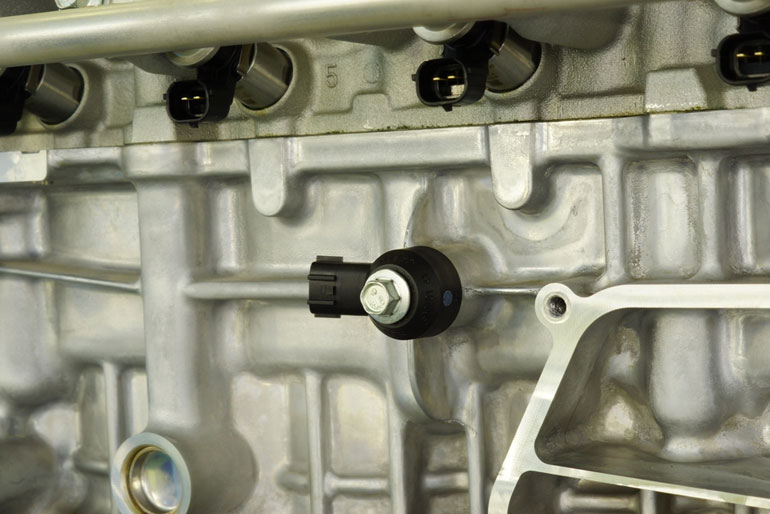The knock sensor holds a very significant role and places in your automobile. Related words for knock could be pinging, pinking, or burning flames. Usually, it gets unnoticed, but there are times when it shows its real importance. It is present over the engine block.
And significant issues may pop up with this minute component, and a prompt response is needed when there’s an issue. A person driving the vehicle must have full knowledge about this minute component.
The essential functions, the problems that could occur, or information related to its replacement are all necessary to be known and understood by the person behind the automobile.
In this article, we are going to discuss all the basics that are connected to knock sensors.
Functions of a Knock Sensor
The knock sensor is placed over the engine head. Usually, around 10 to 40 crankshaft degrees, the fuel inside the cylinder burns in a very specified manner. This helps the process of combustion to reach an absolute peak pressure, which later contributes to combat the expanding gases developing in the automobile.
The essential function of a knock sensor is to pick up the uneasiness or vibrating sounds which occur due to detonation. Once the vibrations are detected by the power control time module, which is primarily related to the automobile, it immediately amends the ignition time.
It compares the current situation with the preset tables or norms of an otherwise valid knock and instantly adapts this change and prevents the engine from catching fire.
Secondly, the knock sensor is placed pretty close to the engine of your automobile. It notices and senses every noise or vibrations made by the driver; therefore, it acts as a protective shield for the engine.
It monitors the waves, and if there’s any vibration against it, it sends immediate signals to the PCM, and PCM, in return, alters the ignition timing to prevent fire.
Third, it balances the fuel to air mix, thereby assuring that your automobile is fuel-efficient. For example, if you drive at high speed, the PCM increases the ignition time; thus, it gives adequate time to the fuel-air mixture in the cylinder to burn. As a result, It makes your car run comfortably on the road and prevents any struggle related to it.
The knock sensor is relatively also a piezoelectric sensor. This means it consists of a resistor and a piezoelectric sensing device. It creates voltage when the sensing crystal is shaken, and it gives it the uniqueness of detecting any sort of detonation. And this property makes it unique.
Can You Drive Without A Knock Sensor?
Yes, you can, but why put yourself and your automobile at risk. It will not stop your car from running on the road, but slowly and gradually, it will damage the engine, and hence your car might not run over.
A faulty knock sensor shows the damage either when the car is accelerating or when it is placed or working under immense load.
One of the significant symptoms of a faulty knock sensor is related to CEL, which is abbreviated as check engine light. This CEL is visible on the dashboards of all the automobiles.
When the knock sensor picks up any abnormal vibrations, it lightens up the CEL, which becomes evident on the panel. The problem can be detected by attaching a code reader to the car. When the check engine light lightens up, check the error code wit an OBD2 scanner.
The following primary symptom is if the knock engine is faulty, it causes problems for the PCM. The power control module cannot pick correct data or signals from the sensors; thus, it adapts to unwanted changes and leads to inappropriate or incorrect ignition time; as a result of wrong ignition time, the engine misfires.
Sometimes our automobiles show excessive consumption of fuel. And this worsens the use. Whenever one encounters such a problem, it is an indication that the knock sensor is faulty. Faulty knock sensors dispatch unnecessary information or data to PCM due to which sometimes the automobile doesn’t respond accurately, and also it worsens the fuel consumption.
Sometimes, when your automobile cylinder is full of fuel, the ignition time is continuously varying; this means that the spark plug is overburden, which leads to damage to the engine.
Low gas mileage is also caused due to the faulty knock sensor. Sometimes when the automobile is not catching up with speed or fails to accelerate because the pressure generating inside the combustion chamber is hardly a fraction of the engine capacity.
This lowers down the torque, and your car fails to speed up. If your car gives off burning smell and starts to jerk or drag off, the faulty knock sensor has permanently ruined your engine, requiring severe evaluation and replacement.
How To Replace A Knock Sensor
Knock sensors are not easily worn out. Your car may run for 150,000 miles before the sensors start knocking the engines. As discussed above, there are many reasons which cause defects in this minute component. However, when your car starts giving a burning smell or starts dragging, you need to check the sensors.
Replacement of a knock sensor isn’t too costly. It may cost you somewhere around 75-200 dollars. Professional help is required, but if you are good with mechanics, you can replace the knock sensors. But expert help is much better for long term saving.
The main steps required in the placement of knock sensors start by cooling the engine first if it’s too hot to wait till it cools down a bit. Once it’s cold, locate the knock sensor. It is present near the engine head. Remove the wiring or place the installation to one side.
Once the knock sensor is located, use a wrench. Place it over the sensor and, in a clockwise direction, turn the wrench to remove it. Place the new one and tighten it up with a wrench and place the wiring to their original positions. If a professional is replacing the sensor, you can make a video of the steps he’s doing and store it for yourself.
Two significant types of knock sensors are pressure measurement and vibration detection. The latter being the most common. Further subtypes of vibration detection are resonant sensors, piezoelectric resonant sensors, and non-piezoelectric resonant sensors.
Vibration detection detects vibration using a spring or vibration plate. The second type uses the inside pressure of the engine cylinder to determine the engine knocks.
Top Brands of Knock Sensors
Once you have decided to buy a knock sensor, it is essential to obtain the genuine one. This could be long-lasting and help protect your car engine in the long run. Purchasing an honest and environment-friendly sensor will save you time and money. Here is a list of brands that offer knock sensors with high quality and reasonable prices.
- ACDelco is reliable and pretty much long-lasting. It provides GM original sensors only for 45 dollars. Not too costly, though. Honda offers a knock sensor for 85 dollars. A little pricey but significant advantage is that it directly provides the sensor from the factory with a manufacturing number 30530=PPL=A01.
- General Motors knock sensors are readily available, and they are cost-effective too. They provide knock sensors for Chevy Silverado’s just for 35 dollars. Just under the budget.
- Beck Arnley provides a sensor for 40 dollars. They aim to provide a genuine knock sensor. Huijin provides a knock sensor with a harnessed wire. And this costs 12 dollars only
- Autex offers to knock sensors that are new and costs 10 dollars. They give a compatibility chart to compare the previous knock sensor with the new one.
- Toyota also provides a knock sensor directly from the manufacturer with a cost of 141 dollars with A manufacturing number 89615-12090. Hyundai provides a knock sensor for 20 dollars with a manufacturing number of 39250=2G100.
Frequently Asked Questions
· Where is the knock sensor located?
The knock sensor is placed over the engine head or internal manifold.
· What happens if you ignore a faulty knock sensor?
If you ignore a faulty knock sensor, it may permanently damage your engine by varying the ignition time and leading to detonation.
· Can we install the knock sensor ourselves?
Suppose you are well aware of the procedure of replacement well and good. If not, use professional help.
Conclusion
As they say, size doesn’t matter, but the properties and essential matters. Knock sensors being a small component located on the engine head, hold high importance. It helps to maintain the ignition time and prevents detonation.
It also prevents overconsumption of fuel by sending appropriate signals to the PCM However, under any circumstances, which in return keeps the ignition time.
However, if your car fails to accelerate under unusual circumstances, drags give off burning smell or lighten the CEL. It is essential to get your knock sensor checked by a professional. This will help to prevent permanent damage to your engine and will save you time and cost.







